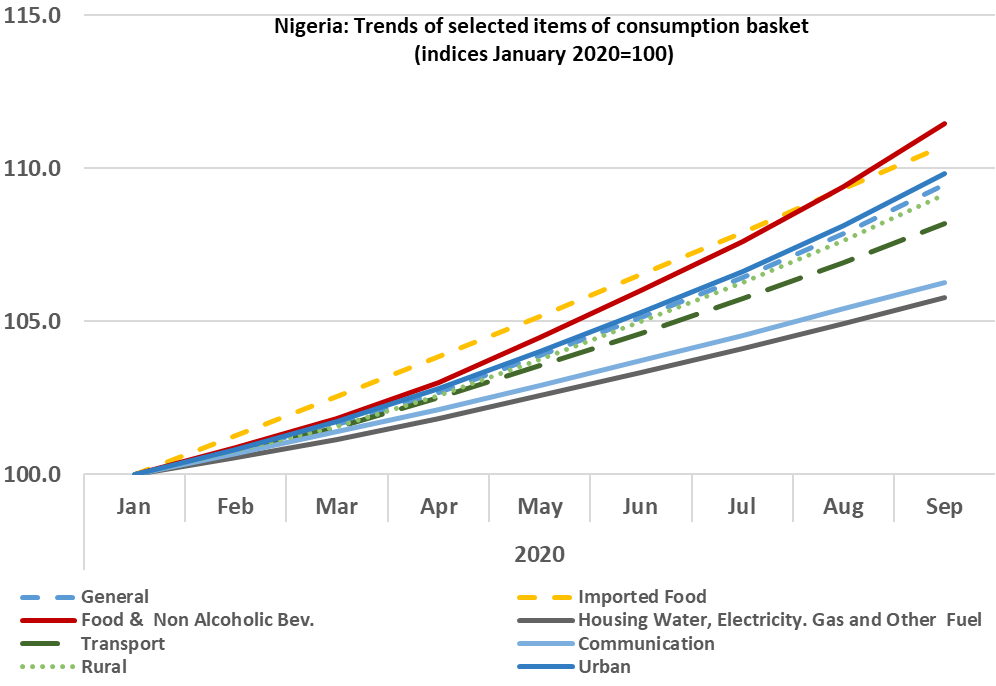A majority of African counties have an average price increase higher than 3% annually.

Quarterly inflation has remained high in most of African RECs: close to or more than 10 per cent in most cases. Significant increases in the first half of 2020 and seem to persist beyond. ECCAS, COMESA and SADC are those communities hit hardest. In CEN-SAD, EAC and UMA, inflation rates are kept to more stable levels.

Mineral-rich countries, agriculture commodity exporters and oil importing countries have recorded noticeable increases in quarterly inflation rates. Inflation in oil exporters countries remained quasi-stable but high.

Zimbabwe, Ethiopia, Angola have the highest inflation rates to date.
Food price index: January 2020=100

Food prices are the major driver of inflation, with 9 countries seeing an increase of more than 10%.

Food and non-alcoholic beverage count for a large part of the consumer basket in a large number of countries: more than 50 per cent in 13 countries and more than 30 per cent in 27 countries.

In Nigeria, food items have been overtaking all consumption basket items, including food items that are imported. In over instances, locally produced food items have been recording higher inflation rates as well.

Like in several countries food items have been contributing for more than half of the country’s inflation.